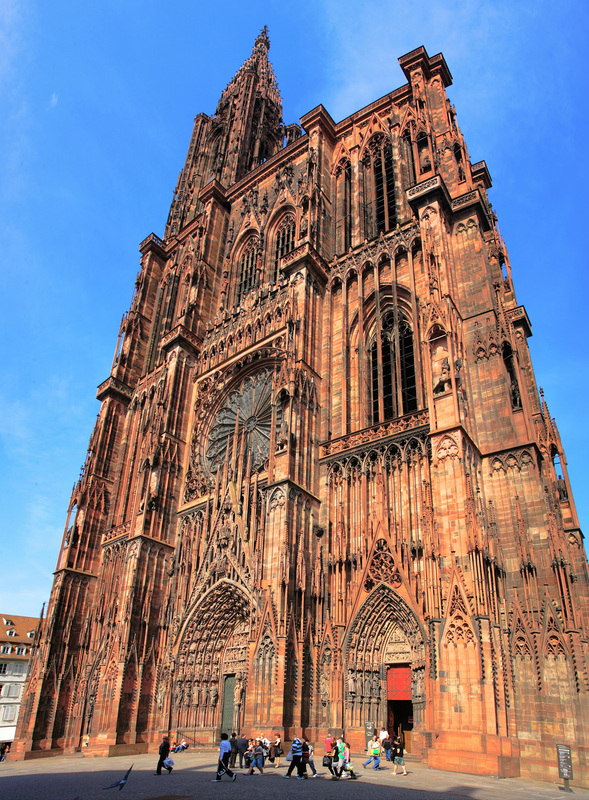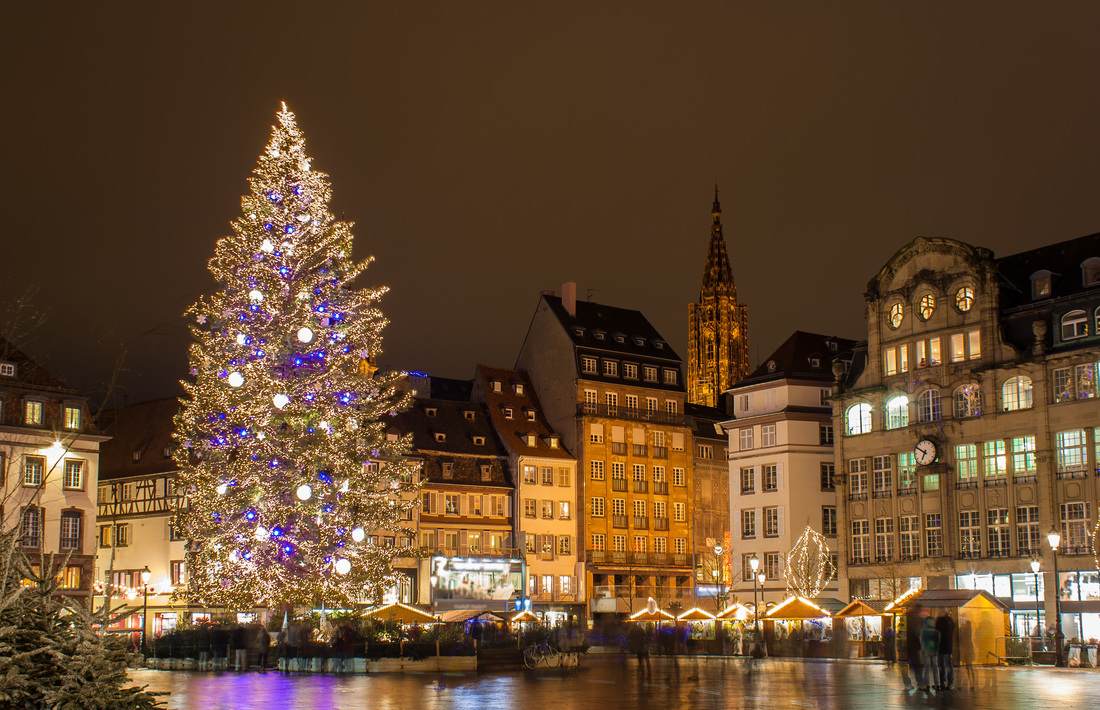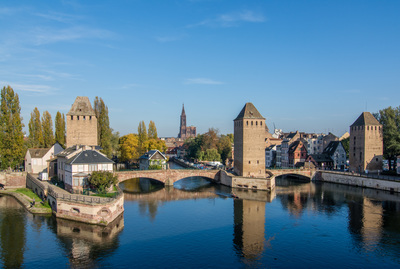|
7/11/2016
Rhine River Port of Call: StrasbourgHome to the oldest Christmas market in Europe, Strasbourg is one of the more popular stops on a romantic Rhine River cruise, and not just during the Christmas season. Aside from being one of the larger port cities on the Rhine, Strasbourg is also the capital of the Alsace- Lorraine region in eastern France and the official seat of the European Parliament. The area draws visitors year round, especially from Europe. Amazing architecture, culinary delights, a multitude of museums, beautiful parks, the Alsace wine region and easy access to the Black Forest have made this city the second most popular tourist city in France after Paris. Nestled on the border between France and Germany, Strasbourg is clearly influenced by both countries. While the region is part of France today, German culture is an integral part of the identity. The Alsace region was French between 1648 and 1871 yet German speaking. Germany then controlled the area for a number of years between 1871 and 1944. And though everyone speaks French in Strasbourg today, one can still find signs written in Alsatian, a German dialect. The local cuisine combines French and German style. Sauerkraut (choucroute) and flammekeuche, a dish that is described as something between pizza and quiche lorraine, are regional specialties and pain d'épices, similar to gingerbread, is popular during the Christmas markets. Winstubs, Alsace restaurants similar to English style pubs, serve the lovely regional wines and beer from local breweries. Main Attractions Strasbourg's historic city center, Grand Ile (Grand Island), surrounded by two arms of the River Il, is designated as a UNESCO World Heritage site. Relatively small, the area is easy to explore and contains many of Strasbourg's main attractions. The city is best known for its Notre-Dame de Strasbourg cathedral, which dates back to 1176 when construction first began. Completed in 1439, it primarily represents a Gothic style (characterized by pointed arches) architecture, but also has Romanesque features (characterized by semi-circle arches). The famous astronomical clock, located inside the church, is the third such clock in this location and is from the 1800's; the first clock was built on site between 1352-1354. To observe the clock's automation in action (12:30 p.m.)get to the church by 11:30 am as the line to enter the church starts early. There is a nominal fee and tickets are required. After touring the cathedral, climb to the top of the tower for a beautiful view of Strasbourg, the Black Forest and the surrounding mountains. From late November to the end of December, the Christmas Market fills the streets and old squares around the cathedral. This market is the oldest Christmas market in Europe, having started in 1570. The former residence of prince-bishops and cardinals, Palais Rohan, a beautiful palace of French baroque architecture, sits next to the cathedral and is home to three art museums, including the Museum of Fine Art, the Archeological Museum and Museum of Decorative Arts. One of the finest collections of medieval art in France can seen at the Palais Rohan. Kleber Place, a short walk from the cathedral, is a picturesque square named after one of Napoleon's generals. France's national anthem "Le Marseillaise" was composed here, and a giant 30 meter Christmas tree is on display in the middle during the Christmas Market. At the southwestern side of the Grande Ill, an easy walk from the cathedral, you'll find the Le Petit France neighborhood with its photogenic, cobblestoned streets, timber framed houses, quaint shops and bistros. Here you'll find plenty of restaurants and the winstubs to enjoy. Beyond the towers is the Barrage Vauban, a covered bridge and dam that crosses the River Ill. Originally built as a defensive structure, today a display of sculptures can be found inside. The original structure enabled residents of the city to raise the level of the Ill river, flooding land south of the bridge, thus making it impassable by the enemy. Another area to explore is the German District, also referred to as Neustadt (new town). A showcase of German neoclassical architecture in Strasbourg, here is where you'll find the University of Strasbourg, the second largest university in France, the University library and National Theater. At the heart of the district lies Place de la République, a vast square centered on a small wooded park. Alsace Wine Country The Alsace wine region produces wine influenced by both France and Germany. The region is well known for its white grape varietals, especially Riesling and Gewurtztraminer, though one can find sparkling wine and Pinot Noir as well. The famous Alsace Wine Route is one of the oldest routes in France. The wine route passes through 70 wine growing towns, charming villages home to over 1000 producers. Open year round, the best time to visit is Spring through Autumn. Keep in mind that walking the vineyards in the fall may be limited du to the harvest. If on a river cruise, a guided excursion will take through the heart of the winemaking country, and a visit to a local cellar for some wine tasting. If your stay in the area is longer, explore the area on one of the cycling or walking routes. There are over 50 paths to walk or hike. Black Forest The Black Forest, or Schwartzwald, region of Germany is easily accessed from Strasbourg. Despite its name, the Black Forest is located in Germany's sunniest region, and served as the inspiration for many of the Brothers Grimm fairytales. The dense forests and beautiful mountains provide ample photo opportunities. To really enjoy the region, give yourself several days to explore the area, famous for clean air, hiking trails and stunning views to the mineral spas, charming villages and cuckoo clocks. Don't miss trying a piece of the mouthwatering Black Forest Cake - chocolate cake soaked in schnapps, layered with cherries and whipped cream!
Comments are closed.
|
Laurie Marschall - Owner and Founder
|











 RSS Feed
RSS Feed
